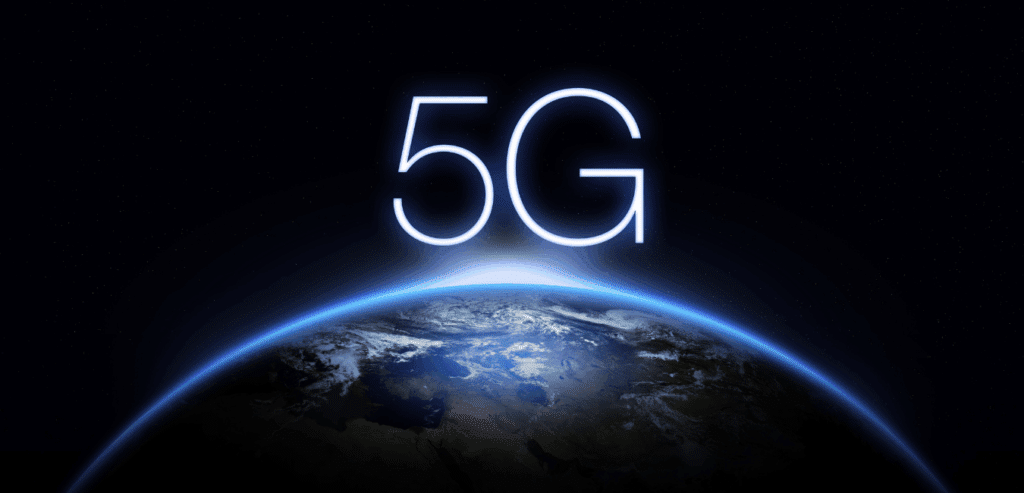Anúncios
The rapid evolution of technology is reshaping the way we connect, communicate, and interact with the world around us.

5G
Among these advancements, 5G stands out as a game-changer, promising faster speeds, reduced latency, and unprecedented possibilities.
Anúncios
But what exactly is 5G, and how does it work? More importantly, how will it transform industries, daily life, and the global economy?
This comprehensive guide dives deep into the world of 5G technology. From understanding the fundamental concepts to exploring its real-world applications, every aspect is covered.
Anúncios
Discover how 5G is revolutionizing everything from healthcare and transportation to entertainment and smart cities. Learn about its benefits, challenges, and the potential risks it brings to the table.
As we explore the societal and economic impacts of 5G, you’ll gain insights into how this technology is shaping the future of connectivity and innovation.
Whether you’re curious about the technical details, its implications for businesses, or its role in building a more connected world, this guide provides all the answers you need.
Stay ahead of the curve and uncover the full potential of 5G technology as we navigate through its transformative power and the endless opportunities it creates.
Understanding the Basics of 5G: What Sets It Apart from Previous Generations
What Is 5G and How Does It Work?
5G, or the fifth generation of wireless technology, represents a groundbreaking evolution in mobile communication. Unlike its predecessors, such as 4G LTE, 5G is not just about faster internet speeds. It introduces an entirely new infrastructure designed to connect devices, systems, and people in ways that were previously unimaginable. But how does it work?
5G operates on higher frequency bands, known as millimeter waves, which offer a significantly larger bandwidth. This allows for an immense amount of data to be transmitted simultaneously, paving the way for real-time communication and rapid data transfer. Additionally, 5G uses advanced technologies such as Massive MIMO (Multiple Input, Multiple Output) and beamforming to enhance coverage and minimize interference, ensuring a stable and reliable connection.
One of the most exciting aspects of 5G is its ultra-low latency. Latency, or the delay between sending and receiving information, is drastically reduced with 5G, enabling near-instantaneous communication. This is a game-changer for applications like remote surgery, autonomous vehicles, and virtual reality, where even milliseconds matter.
Key Differences Between 5G and 4G
While 4G brought us mobile streaming, high-speed downloads, and robust connectivity, 5G takes these capabilities to an entirely new level. Here are some of the fundamental differences:
1. Speed: 5G networks are up to 100 times faster than 4G, with speeds potentially reaching 10 Gbps. This means downloading an HD movie in just seconds.
2. Latency: As mentioned earlier, 5G significantly reduces latency, often to under 1 millisecond, compared to the 50 milliseconds typically experienced on 4G networks.
3. Device Connectivity: While 4G networks can support thousands of devices within a small area, 5G can accommodate millions, making it ideal for smart cities and the Internet of Things (IoT).
4. Energy Efficiency: 5G networks are designed to consume less energy per transmitted bit, which is crucial for the sustainability of connected devices and systems.
These features set the stage for a new era of connectivity, but the implications of 5G go far beyond technical upgrades. Let’s explore how this technology is shaping industries and everyday life.
The Transformative Impact of 5G on Industries
Revolutionizing Healthcare Through 5G
The healthcare industry stands to benefit immensely from the implementation of 5G technology. One of the most promising applications is in telemedicine, which has already seen substantial growth in recent years. With 5G’s ultra-fast speeds and low latency, doctors can conduct virtual consultations that feel as seamless as in-person visits, even in remote areas where connectivity was previously a barrier.
Beyond telemedicine, 5G enables groundbreaking advancements such as remote surgeries. Imagine a surgeon in New York performing a complex operation on a patient in a rural area thousands of miles away, with robotic precision and real-time feedback. This is becoming a reality, thanks to the near-instantaneous data transfer that 5G offers.
Additionally, 5G enhances the capabilities of wearable health devices. From monitoring heart rates to tracking glucose levels, these devices can provide real-time data to healthcare providers, enabling quicker interventions and personalized care plans. This level of connectivity could significantly improve outcomes for patients with chronic conditions.
5G in the Automotive Industry: Driving Innovation
The automotive sector is another industry poised for a 5G revolution. Autonomous vehicles rely heavily on real-time data to navigate, avoid obstacles, and communicate with other vehicles. With 5G, the latency issues that currently limit the effectiveness of self-driving cars are minimized, making these vehicles safer and more reliable.
Vehicle-to-Everything (V2X) communication is another exciting development made possible by 5G. This technology allows cars to communicate with each other, as well as with infrastructure like traffic lights and road signs. The result is a smoother flow of traffic, reduced accidents, and a more efficient use of road networks.
Moreover, 5G could transform the in-car experience for passengers. High-speed internet and low-latency connections enable advanced entertainment systems, real-time navigation updates, and even augmented reality features, making commutes more enjoyable and productive.
How 5G Will Shape Society and Daily Life
Building Smarter Cities with 5G
Smart cities are no longer a distant dream but a tangible possibility, thanks to 5G. By connecting millions of devices, sensors, and systems, 5G enables cities to operate more efficiently and sustainably. For instance, smart grids can optimize energy usage, reducing waste and lowering costs for residents.
Public safety is another area where 5G can make a significant impact. Real-time surveillance systems powered by 5G can enhance security, while connected emergency services can respond more quickly and effectively to incidents. Additionally, 5G can improve public transportation by providing real-time updates on schedules, routes, and delays, making it easier for people to navigate their cities.
On an individual level, 5G-enabled smart homes are becoming increasingly popular. From controlling appliances with voice commands to optimizing energy consumption through connected devices, 5G makes daily life more convenient and efficient.
5G and Education: Bridging the Gap
The education sector has faced significant challenges in ensuring equal access to quality learning, particularly in rural and underserved areas. 5G has the potential to bridge this gap by enabling high-quality virtual classrooms. Students can participate in interactive lessons, collaborate with peers globally, and access a wealth of online resources, regardless of their location.
Virtual and augmented reality are also set to revolutionize the way we learn. Imagine history lessons where students can explore ancient civilizations in a virtual environment, or biology classes where they can examine the human body in 3D. These immersive experiences are only possible with the high-speed, low-latency connectivity that 5G offers.
Additionally, 5G can support the development of adaptive learning platforms that tailor educational content to each student’s needs, strengths, and weaknesses. This personalized approach ensures that no one is left behind, fostering a more inclusive and effective educational system.
The Challenges and Ethical Implications of 5G Deployment
Addressing Security Concerns
While 5G brings numerous benefits, it also raises important security concerns. With billions of devices connected to the network, the risk of cyberattacks increases significantly. Hackers could potentially exploit vulnerabilities to access sensitive information or disrupt critical services.
To address these risks, it’s crucial to implement robust security measures at every level of the 5G ecosystem. This includes encryption, authentication protocols, and regular software updates to protect against emerging threats. Additionally, governments and organizations must collaborate to establish clear guidelines and regulations for data privacy and security.
Environmental and Ethical Considerations
As we embrace 5G, it’s essential to consider its environmental impact. The increased demand for data and devices could lead to higher energy consumption, contributing to carbon emissions. However, 5G networks are also more energy-efficient than previous generations, which could offset some of these concerns.
Another ethical consideration is the potential for digital inequality. While 5G promises to connect more people than ever before, there’s a risk that rural and low-income areas may be left behind due to the high costs of infrastructure and devices. Ensuring equitable access to 5G is a critical challenge that must be addressed to avoid widening the digital divide.
By acknowledging and addressing these challenges, we can ensure that the rollout of 5G is both responsible and inclusive, paving the way for a future that benefits everyone.

Conclusion: Embracing the Future with 5G Technology
In conclusion, the advent of 5G technology represents a pivotal moment in the evolution of connectivity, promising unprecedented speeds, ultra-low latency, and the capacity to support billions of connected devices.
This transformative technology is not merely an upgrade from 4G but a catalyst for innovation across industries, including healthcare, automotive, education, and urban development.
With applications ranging from remote surgeries and autonomous vehicles to smart cities and immersive virtual learning, 5G is set to redefine how we live, work, and interact with the world around us.
However, as we embrace the opportunities 5G offers, we must also address its challenges. Security concerns, environmental impact, and the risk of digital inequality demand proactive solutions to ensure the benefits of 5G are distributed equitably and sustainably.
Collaboration between governments, industries, and communities will be essential to overcoming these obstacles and maximizing the potential of this groundbreaking technology.
As 5G continues to expand globally, its impact on society will only grow more profound. By understanding its capabilities and implications, we can prepare for a future that is more connected, efficient, and innovative than ever before. The journey into the era of 5G is just beginning, and its possibilities are as limitless as our imagination.
